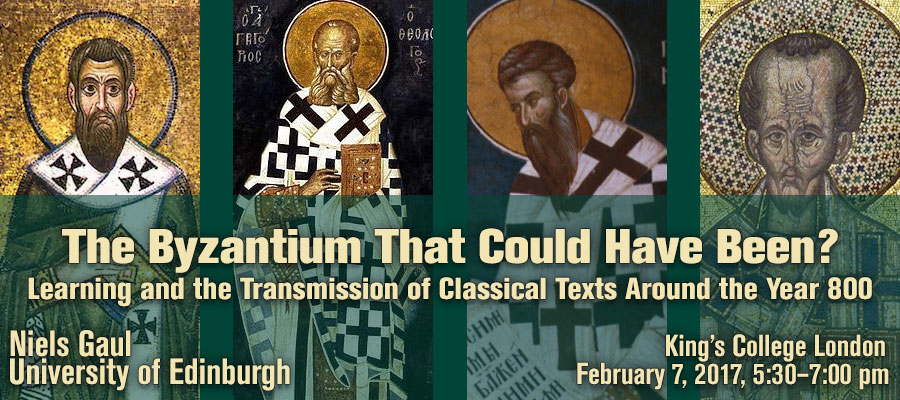The Byzantium That Could Have Been? Learning and the Transmission of Classical Texts Around the Year 800, lecture by Niels Gaul (University of Edinburgh), King’s College London, February 7, 2017, 5:30–7:00 pm
This paper explores if in the seminal decades around the year 800, i.e. in the period following the so-called first Iconoclam and prior to the second Iconoclasm, Byzantine culture might perceivably have gone down an altogether different path – one of rhetorical paideia based on the writings of the ‘three hierarchs’, Basil of Caesarea, Gregory of Nazianzus, and Gregory of Nyssa, and of slightly later Christian figures, such as John Chrysostom. Its purpose is of course not to propose counterfactual history, but to revisit the first steps of what is commonly called the ‘first Byzantine humanism’. In doing so the paper will examine the social background of members of the literate elite around 800 who chose to express themselves in a classicising sociolect imitating, or pretending to imitate, the ancient Attic rhetorical dialect; it will next look at the (limited) role of ancient texts in their rhetorical œuvre; and finally it will seek to place these observations in a larger socio-historical context.
Niels Gaul has taught Byzantine Studies and Greek Palaeography at the University of Oxford and the Central European University Budapest and is now the A. G. Leventis Professor of Byzantine Studies at the University of Edinburgh. He is the author of Thomas Magistros und die spätbyzantinische Sophistik (2011) and currently writing the Cambridge Manual of Greek Palaeography.
